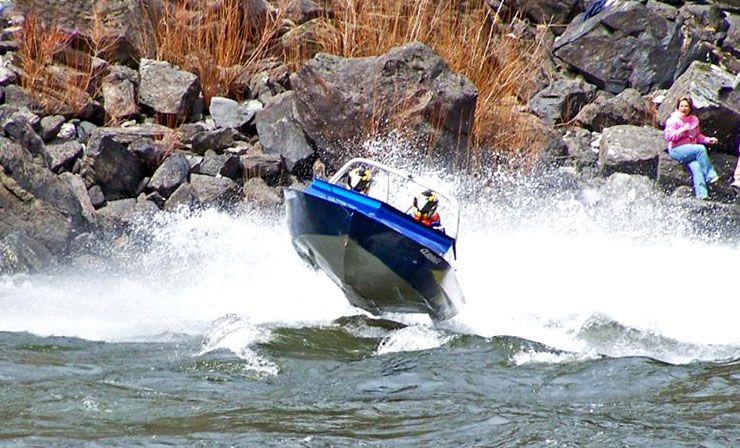Get the adrenaline flowing by watching the Jet boats which can reach speeds up to 140 mph.
These are insanely quick and nimble machines. Boat crew has a driver and a navigator. The driver is the primary set of eyes and, in theory, has the whole course fixed in his mind. They are responsible for getting the most out of the boat and the course.
–
Duties and jobs are different in each crew, these are general duties. It’s very loud. Most of it is the 1000 horsepower motor howling right behind you. The wind rushing past and through your helmet contributes as does the squall of the pump and the water sliding by the aluminum hull. Most drivers wear earplugs.
–
Then there is the classic debate of whether it’s easier going upriver or down. The look of a riffle or rock changes completely depending on if you are going up through it or down through it. A rock you can plainly see going up river might be totally invisible going down river. Ideally, you would be good at reading the water in both directions.
See ya on the River!














Facebook Comments